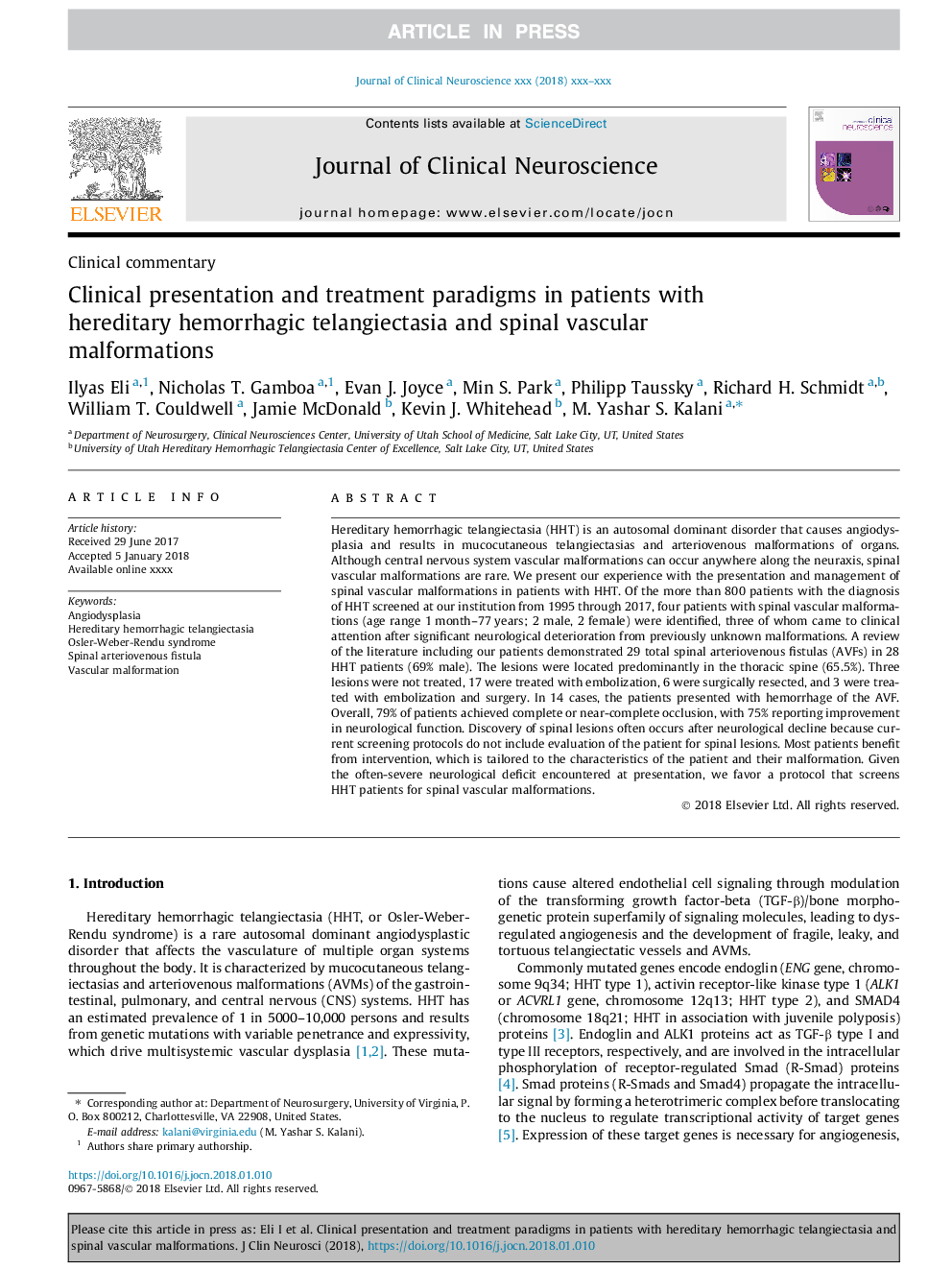| کد مقاله | کد نشریه | سال انتشار | مقاله انگلیسی | نسخه تمام متن |
|---|---|---|---|---|
| 8685148 | 1580266 | 2018 | 7 صفحه PDF | دانلود رایگان |
عنوان انگلیسی مقاله ISI
Clinical presentation and treatment paradigms in patients with hereditary hemorrhagic telangiectasia and spinal vascular malformations
ترجمه فارسی عنوان
پارادایم های ارائه و درمان بالینی در بیماران مبتلا به تلانژکتازیا هموراژیک ارثی و ناهنجاری های عروقی ستون فقرات
دانلود مقاله + سفارش ترجمه
دانلود مقاله ISI انگلیسی
رایگان برای ایرانیان
کلمات کلیدی
موضوعات مرتبط
علوم زیستی و بیوفناوری
علم عصب شناسی
عصب شناسی
چکیده انگلیسی
Hereditary hemorrhagic telangiectasia (HHT) is an autosomal dominant disorder that causes angiodysplasia and results in mucocutaneous telangiectasias and arteriovenous malformations of organs. Although central nervous system vascular malformations can occur anywhere along the neuraxis, spinal vascular malformations are rare. We present our experience with the presentation and management of spinal vascular malformations in patients with HHT. Of the more than 800 patients with the diagnosis of HHT screened at our institution from 1995 through 2017, four patients with spinal vascular malformations (age range 1â¯month-77â¯years; 2 male, 2 female) were identified, three of whom came to clinical attention after significant neurological deterioration from previously unknown malformations. A review of the literature including our patients demonstrated 29 total spinal arteriovenous fistulas (AVFs) in 28 HHT patients (69% male). The lesions were located predominantly in the thoracic spine (65.5%). Three lesions were not treated, 17 were treated with embolization, 6 were surgically resected, and 3 were treated with embolization and surgery. In 14 cases, the patients presented with hemorrhage of the AVF. Overall, 79% of patients achieved complete or near-complete occlusion, with 75% reporting improvement in neurological function. Discovery of spinal lesions often occurs after neurological decline because current screening protocols do not include evaluation of the patient for spinal lesions. Most patients benefit from intervention, which is tailored to the characteristics of the patient and their malformation. Given the often-severe neurological deficit encountered at presentation, we favor a protocol that screens HHT patients for spinal vascular malformations.
ناشر
Database: Elsevier - ScienceDirect (ساینس دایرکت)
Journal: Journal of Clinical Neuroscience - Volume 50, April 2018, Pages 51-57
Journal: Journal of Clinical Neuroscience - Volume 50, April 2018, Pages 51-57
نویسندگان
Ilyas Eli, Nicholas T. Gamboa, Evan J. Joyce, Min S. Park, Philipp Taussky, Richard H. Schmidt, William T. Couldwell, Jamie McDonald, Kevin J. Whitehead, M. Yashar S. Kalani,
